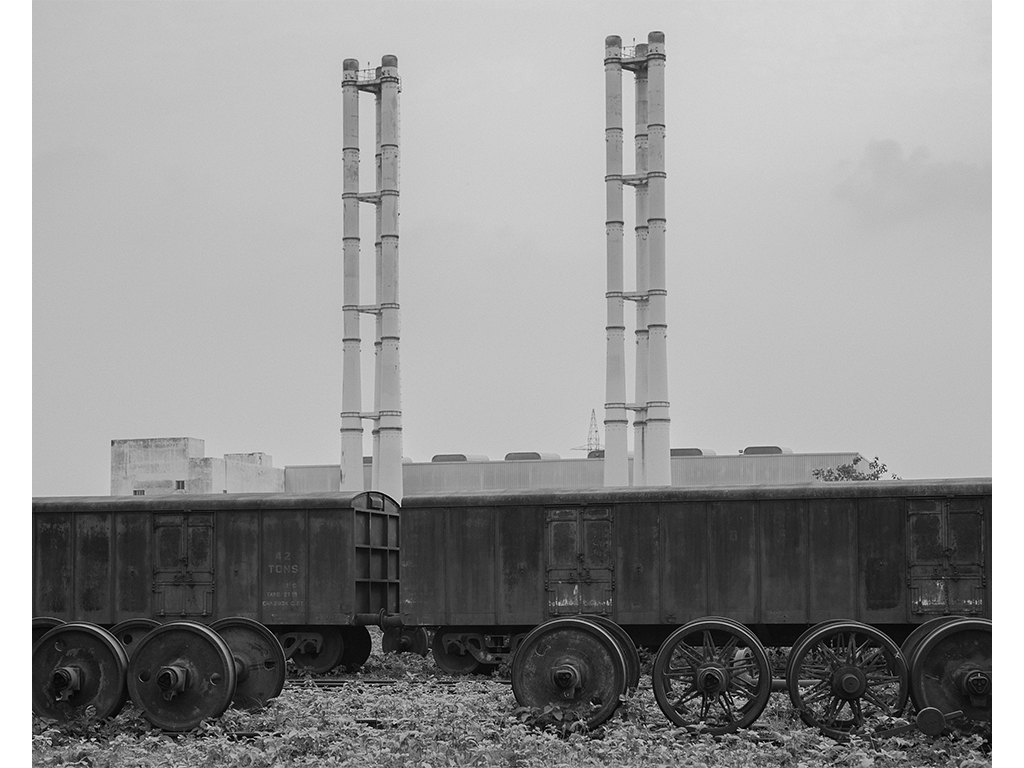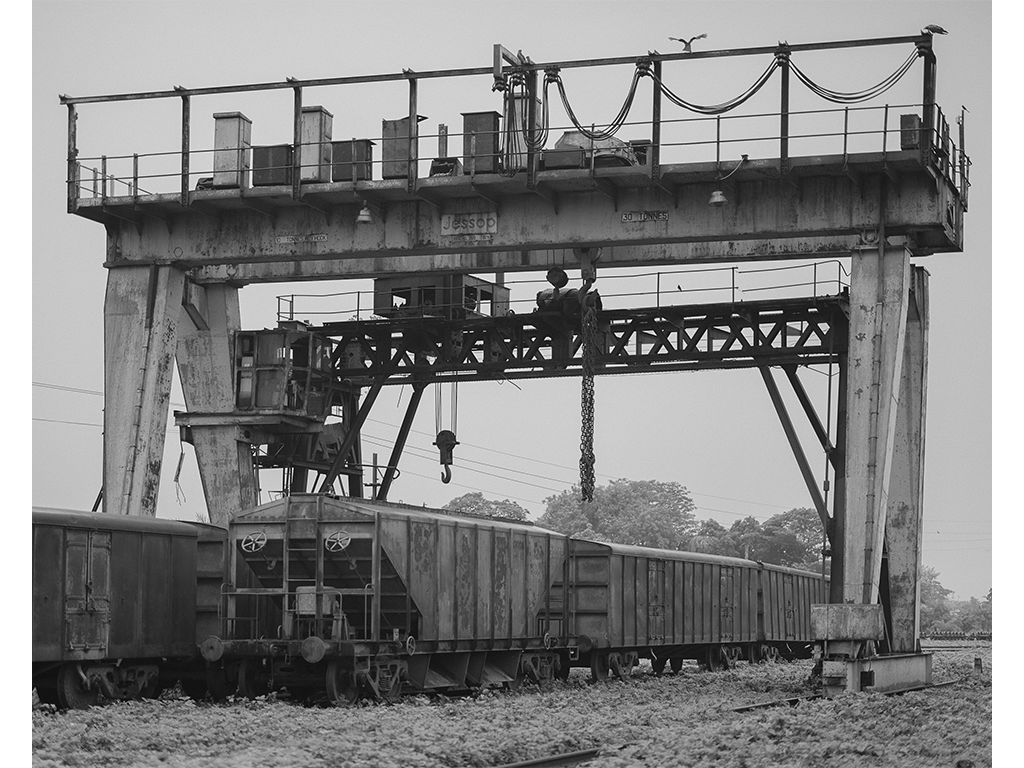St. Paul's Crypt
2 Southville Rd, Southville, Bristol BS3 1AS
16 Oct to
17 Nov 2024
Thu - Sun
11am to 5pm










In recent years, Sarker Protick has been studying the material fragments of empire found across modern-day Bangladesh – a region that was first known as East Bengal, then later East Pakistan, before gaining independence in 1971.
His images firstly draw attention to the British railway lines built in the 19th century to connect the rich agricultural lands of East Bengal to the British administrative capital of Calcutta (Kolkata). The trainlines became the lifeblood of the colonial project, allowing the British to effectively manage India as a singular body. Yet within this unifying railway system lay the seeds of colonial collapse. It was the very notion of a pan-Indian identity and political movement – made possible via these new connections – that led to the expulsion of the British in 1947. The ensuing partition saw communities flee, partly by train, as Bengal was carved in two, with Hindu communities moving west to join the newly independent India, while Muslim communities travelled east to join what became East Pakistan. Bodily metaphors are common when writing about infrastructure – for example, railways as the lifeblood of the nation’s body. Such language demonstrates how seemingly inert structures play an active role in shaping lives and histories.
Elsewhere, Protick focuses upon abandoned Zamindar houses, once occupied by landlords – the middlemen of all empires – who were assigned the task of extracting rent from rural tenants. The system began in the 16th Century under the Mughal Empire which extorted rent from Hindu tenant farmers who grew early commodities including cotton, indigo, rice, wheat and tea. While much of this revenue was passed directly to the centralised government of the Mughal emperor, the Zamindars lived lives of relative luxury, similar to the landed aristocracy of other regions. Upon gaining control of Bengal in 1765, the East India Company quickly consolidated this system of land control, establishing a small but loyal class of Hindu landowners who now ruled over their rural, often muslim tenants. This came to an abrupt end during partition with landlords some of the first to flee. The abandoned Zamindar houses slowly fell into disrepute, to be overtaken by their surroundings.
Spaces of Separation speaks to the history of Bengal and the ongoing dance of people, place and power. The project is also about the act of listening itself, understanding how the past is always present, both in the surrounding landscape as well as in the lives of all who are shaped by history. It is a meditation on collective memory and the role it might play in society today.
About Sarker Protick
Working with photography, video and sound, Sarker Protick’s works are built on long-term surveys of Bangladesh. He is drawn to themes such as time passing, the alteration of land and borders, as well as traces of both personal and political histories. Protick is a lecturer at the South Asian Media Institute Pathshala, and co-curator of Chobi Mela, the longest running international photography festival in Asia. As an artist he has received multiple awards and fellowships, including Joop Swart Masterclass, Foam Talent, Light Work Residency, Magnum Foundation Fund and the World Press Photo Award. He is represented by Shrine Empire, Delhi.
Supported by:


